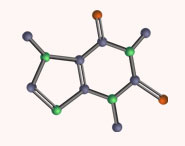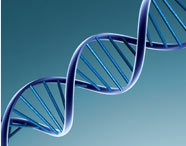


 علم الكيمياء
علم الكيمياء 
 الكيمياء التحليلية
الكيمياء التحليلية 
 الكيمياء الحياتية
الكيمياء الحياتية 
 الكيمياء العضوية
الكيمياء العضوية 
 الكيمياء الفيزيائية
الكيمياء الفيزيائية
 الكيمياء اللاعضوية
الكيمياء اللاعضوية 
 مواضيع اخرى في الكيمياء
مواضيع اخرى في الكيمياء
 الكيمياء الصناعية
الكيمياء الصناعية |
أقرأ أيضاً
التاريخ: 2024-06-02
التاريخ: 10-3-2018
التاريخ: 26-7-2019
التاريخ: 2023-08-27
|
Life is built of amides, because the amide group is the link through which amino acids join together to form the proteins which make up much of the structural features of living systems.
Nylon is a synthetic polyamide, and shares with many proteins the property of durability. The structure of this deceptively simple functional group has an unexpected feature which is responsible for much of the stability it confers. The allyl anion, carboxylate, and nitro groups have four electrons in a π system spread out over three atoms. The nitrogen in the amide group also has a pair of electrons that can conju gate with the π bond of the carbonyl group. For effective overlap with the π bond, this lone pair of electrons must be in a p orbital. This in turn means that the nitrogen must be sp2 hybridized.
In the carboxylate ion, a negative charge is shared (equally) between two oxygen atoms. In an amide there is no charge as such—the lone pair on nitrogen is shared between the nitrogen and the oxygen. The delocalization can be shown as usual by using curly arrows, as shown in the margin.
This representation suffers from the usual problems. Curly arrows usually show electron movement, but here they do not: they simply show how to get from one of the alternative representations to the other. The molecular orbital picture of the amide tells us that the electrons are unevenly distributed over the three atoms in the π system with a greater electron density on the oxygen: you can see this in the delocalized structure on the right, which has a full negative charge on O and a positive charge on N. (We also indicated this in the diagram of the lowest energy π orbital above, which has a greatest coefficient, and therefore greatest electron density, on O.) Another aspect of the structure of the amide group that this pair of structures indicates correctly is that there is partial double bond character between the C atom and the N atom. We will come back to this shortly. The real structure of the amide group lies in between the two extreme structures linked by the delocalization arrow: a better representation might be the structure on the right. The charges in brackets indicate substantial, although not complete, charges, maybe about a half plus or minus charge. However, we cannot draw mechanisms using this structure. We can summarize several points about the structure of the amide group, and we will then return to each in a little more detail
• The amide group is planar—this includes the fi rst carbon atoms of the R groups attached to the carbonyl group and to the nitrogen atom.
• The lone pair of electrons on nitrogen is delocalized into the carbonyl group.
• The C–N bond is strengthened by this interaction—it takes on partial double bond character. This also means that we no longer have free rotation about the C–N bond, which we would expect if it were only a single bond.
• The oxygen is more electron-rich than the nitrogen. Hence, we might expect the oxygen rather than the nitrogen to be the site of electrophilic attack.
• The amide group as a whole is made more stable as a result of the delocalization. How do we know the amide group is planar? X-ray crystal structures are the simplest answer. Other techniques such as electron diffraction also show that simple (non-crystalline) amides have planar structures. N,N-Dimethylformamide (DMF) is an example. The N–CO bond length in DMF (135 pm) is closer to that of a standard C–N double bond (127 pm) than to that of a single bond (149 pm). This partial double bond character, which the delocalized structures led us to expect, is responsible for restricted rotation about this C–N bond. We must supply 88 kJ mol−1 if we want to rotate the C–N bond in DMF (remember a single bond only takes about 3 kJ mol−1, while a full C–C double bond takes about 260 kJ mol−1). The amount of energy available at room temperature is only enough to allow this bond to rotate slowly, and the result is quite clear in the 13C NMR spectrum of DMF. There are three carbon atoms altogether and three signals appear—the two methyl groups on the nitrogen are different. If free rotation were possible about the C–N bond, we would expect to see only two signals, since the two methyl groups would become identical.
Amides in proteins
Proteins are composed of many amino acids joined together with amide bonds. The amino group of one can combine with the carboxylic acid group of another to give an amide known as a peptide—two amino acids join to form a dipeptide; many join to give a polypeptide.
The peptide unit so formed is a planar, rigid structure because of restricted rotation about the C–N bond. This rigidity confers organizational stability on protein structures.



|
|
|
|
مقاومة الأنسولين.. أعراض خفية ومضاعفات خطيرة
|
|
|
|
|
|
|
أمل جديد في علاج ألزهايمر.. اكتشاف إنزيم جديد يساهم في التدهور المعرفي ؟
|
|
|
|
|
|
|
العتبة العباسية المقدسة تنظّم دورةً حول آليّات الذكاء الاصطناعي لملاكاتها
|
|
|